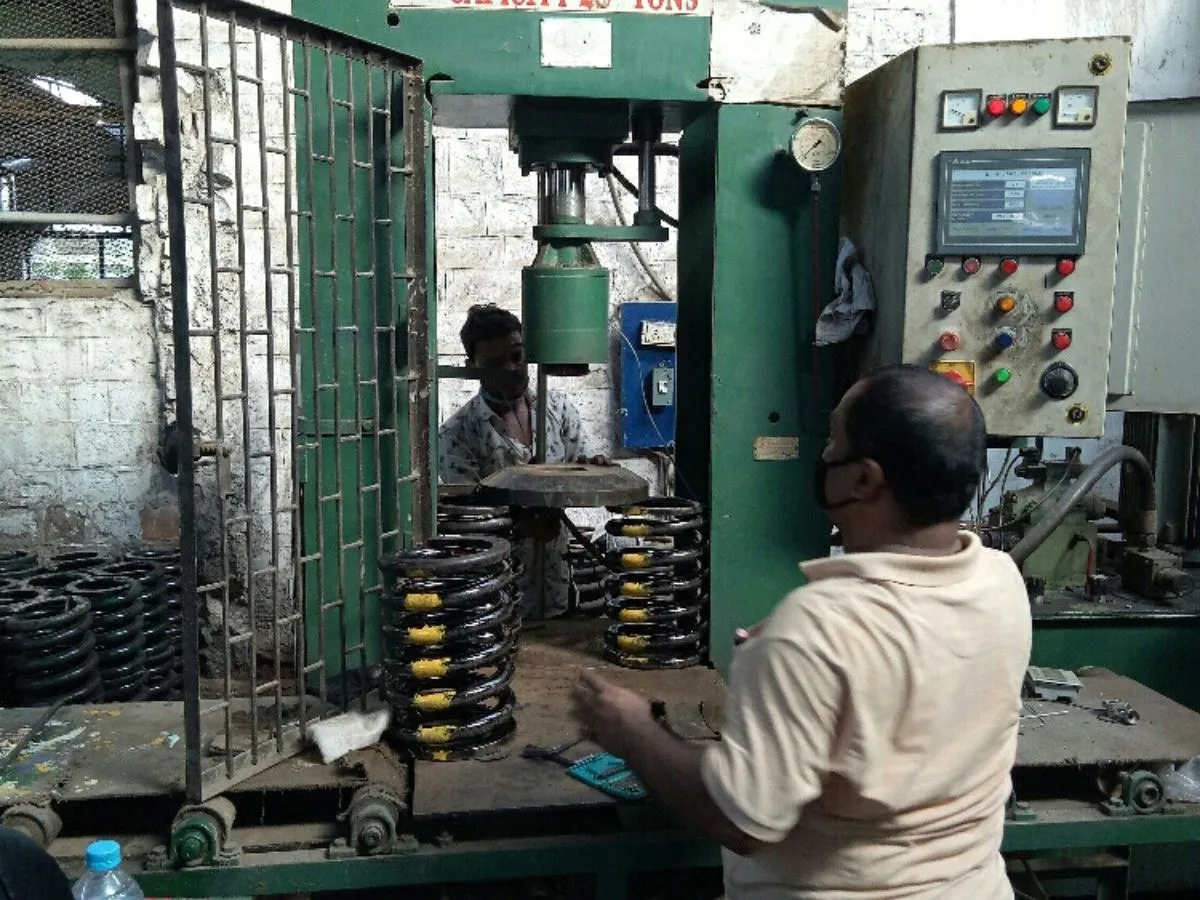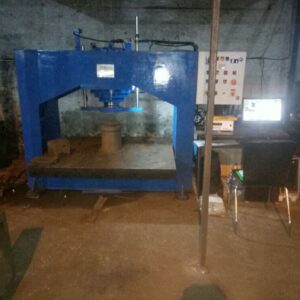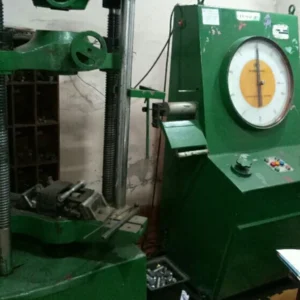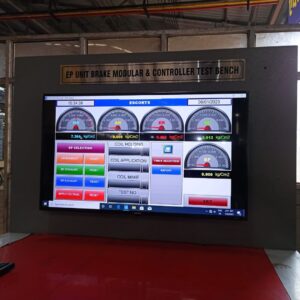Spring Testing Machine is a specialized pieces of equipment that test spring properties and characteristics. These are the features and specifications of a typical machine.
Details and Features
- Purpose: The Spring Testing Machine’s primary function is to evaluate and measure the mechanical properties, such as tension, compression, and torsion, of springs.
- Design: It is typically composed of a Hard frame structure, with precise measuring instruments and controls.
- Load application mechanism: Spring Testing Machines use mechanisms to apply controlled load to the spring being tested. It may be hydraulic, pneumatic, or mechanical, depending on the design of the machine.
- Load measurement: This machine is equipped with load cells or load sensors to accurately measure the force that the spring receives during testing.
- Measurement of displacement: This includes sensors or mechanisms that measure the displacement or deformation of the spring when it is under load.
- Control System Modern Spring Testing Machines feature advanced control systems that allow precise adjustment of test parameters, such as load rate and holding time.
- Safety Features These machines have safety features that ensure the safety of operators and protect equipment. These features may include overload protection buttons, emergency stop buttons, and safety enclosures.
- Data Acquisition: Many Spring Testing Machines have data acquisition systems that record and analyze test results. It may also include data analysis and visualization software.
- Compatibility These springs are compatible with a variety of spring types and sizes, ranging from small precision springs to large industrial springs.
- Ease Of Use: These machines are accessible to users of all levels of expertise thanks to their intuitive controls and user-friendly interfaces.
Technical Specifications
- Load capacity is usually specified in units such as Newtons or Kilograms.
- Accuracy: The accuracy of measurements of displacement and load, expressed in percentages of the full-scale capacity.
- Speed range: A range of loading speeds available for testing. Often specified in millimeters/minute (mm/min) and inches/minute (in/min).
- Maximum Stroke: The maximum distance that the machine’s actuator is capable of traveling, which determines the maximum deformation that the spring can experience during testing.
- Control resolution: the smallest increment in load or displacement that can be accurately controlled by the machine.
- Power Requirements Voltage, phase, and frequency requirements of electrical operation.
- Dimensions & Weight: The physical dimensions and weight of the device, including any clearances required for installation.
- Compliance Standards: Compliance with industry standards, regulations, and rules, such as ISO, ASTM, or DIN. This ensures the accuracy and reliability of test results.
Description of the operating cycle
Spring Testing Machines follow a sequential procedure to assess mechanical properties accurately.
- Initialization and Setup The operator adjusts grips or fixtures so that the spring is securely held. To ensure accurate measurements, the calibration and zeroing procedure is performed after powering your machine.
- Test Parameter Selection The operator selects the desired test parameters, such as the load rate, the holding time, and the displacement rate, based on spring specifications and standards.
- Loading Deformation Measurement: The machine applies controlled loads to the springs at a specified rate, while measuring their deformation simultaneously using displacement sensors. The data regarding the load versus displacement are recorded to be analyzed.
- Holding and Relaxing (Optional ): In some tests, the spring may be required to hold a certain load for a specified time to evaluate its performance under sustained load conditions. After the holding period the spring may be released to observe the relaxation effects.
- Unload: After the test parameters are met, the machine will reduce or remove the applied load on the spring.
- Data Acquisition: Test data is collected and stored in the data acquisition system of the machine. This includes curves for load and displacement. The data is analyzed to determine the mechanical properties of the spring, including stiffness, yield strength, and resilience.
- Reporting: A detailed report detailing the test set-up, parameters, and mechanical properties observed of the spring is produced. This report is a useful reference for quality control or product development.






Reviews
There are no reviews yet.